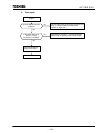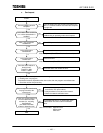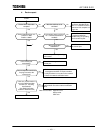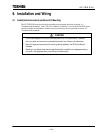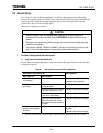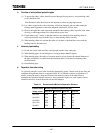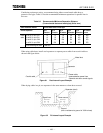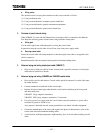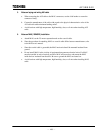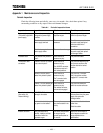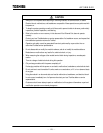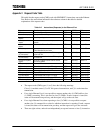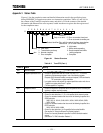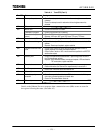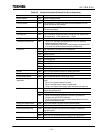
167
6 F 3 B 0 3 6 2
e. Wiring routes
The desirable routes for laying the transmission cable can be ordered as follows.
(1) Using a dedicated route
(2) Using a route dedicated to computer system related lines
(3) Using a route dedicated to general measurement equipment
(4) Using a route dedicated to plant control related lines
2. Overview of panel internal wiring
When 10BASE-T is used with the Ethernet Port, twisted pair cable is connected to the Ethernet
Port. Keep the following points in mind when wiring inside the control panel.
a. Wiring path
Use the weak-signal route within the panel for wiring the coaxial cable.
In particular, keep the coaxial cable at least 50 cm away from power supply cables.
b. Securing coaxial cable
Secure the coaxial cable with clamp materials so that the weight of the cable is not applied to the
cable's connectors.
Remember that the cable not must be bent beyond its minimum bending radius.
3. Notes on laying and wiring twisted pair cable (10BASE-T)
a. Only use this twisted pair cable in boards. Consult with a specialist contractor if twisted pair
cable must be routed out of boards.
4. Notes on laying and wiring 10BASE2 and 10BASE5 coaxial cable
a. Only use this coaxial cable indoors. Consult with a specialist contractor if coaxial cable must
be routed outdoors.
b. Connect terminators to both ends of the coaxial cable.
c. Insulate all exposed metal parts other than the coaxial cable installation point from ground
and other metal parts.
10BASE5: Plugs, adapters, terminators
10BASE2: BNC plugs, adapters, terminators, T connectors.
d. For safety, ground, at a single point, the coaxial cable's external conductor to a point with a
resistance to ground of 100 Ω or less.
Also, prepare a dedicated network system ground that is not shared with other equipment.
e. Contact the manufacturer of the cable with regard to the physical characteristics value of the
coaxial cable allowable minimum bending radius.
f. Avoid locations with high temperature, high humidity, dust, or oil mist when installing coaxial
cable.



